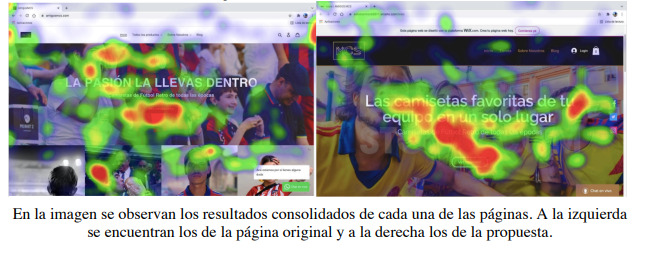This thesis aims to support companies that are looking to grow. One of the most relevant topics, which abruptly expanded with the arrival of Covid19 and preventive isolations, was the migration to digital spheres. Undoubtedly, the presence of a brand on social networks is a minimum when talking about a business model today. However, the website is one of the most significant spaces for a company when communicating its value proposition, products, objectives or background. In a society where there is a lack of understanding of the world of communications, design and advertising, it is said that the cost for the development of a website is very high, prioritizing the aesthetic part when creating a website, forgetting the technical and theoretical foundation of the content. Therefore, this research seeks to be a bridge to understand the need to develop web pages based on technical principles, with the aim of meeting the objectives of the brand, satisfying the needs of customers and strengthening the readability of the sites. Throughout the investigation, an attempt will be made to validate a web design proposal through a scientific technique, eye tracking. For this reason, neuromarketing will be conceptualized, its operation, applications, techniques and tools; delving into eye tracking that will be vital to find opportunities for improvement and successes of what is proposed in the investigation. In addition, a diagnosis will be made to the current website of a Colombian venture based on basic principles of graphic design and web design, which will be decisive for the construction of a website proposal that will seek to improve the visibility of the brand and the readability of its portal. In advance, I hope that this research is very useful for the reader and contributes to the different fields of knowledge involved in it.
From Theory to Neuromarketing: Eye Tracking Test In this chapter, the results obtained during the eye tracking test carried out on the original website of the Amigos MCS brand and the website proposed by the researcher are presented. The free and online application software Gaze Recorder (gazerecorder.com) was used as an eye tracking tool, the latter aims to be a prototype of this neuromarketing technique where the test is executed through a computer’s webcam. The Gaze Recorder test consists of 2 stages, the first seeks to calibrate the person’s gaze through some vision exercises with the webcam on and the second seeks to calibrate the gaze with exposure to graphic content (web pages) for a time determined by section (20-25 seconds). After the exam, the platform delivers to the researcher heat maps per person tested and maps with consolidated results, where on a scale from blue to red the points observed by the participants are seen (the redder the color, the more attention at the point). Thus, 10 people were asked to take the test, 5 participants per website, none of the testers had the possibility to observe both sites. Each of the participants received the instruction to navigate the website that corresponded to them and to identify the points that most caught their attention during the time stipulated by the platform, in such a way that the software could receive the eye movement and the mouse movement of each one of the people. Next, the graphic results of the test are presented, where a comparison is made between both pages to highlight the most important points of each of these. The consolidated heat maps of the modified sections are projected to make a parallel between what was seen before and what is observed after, in the annexes you can find the heat maps of each of the participants in this test.
https://repository.javeriana.edu.co/handle/10554/60571
